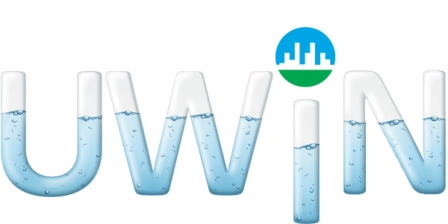Mid-Atlantic Region
Click here to meet our Mid-Atlantic/Baltimore Stakeholder Advisory Committee.
Urban water quality issues are driven to a great extent regionally by the condition of major receiving water bodies such as the Chesapeake Bay. The Chesapeake Bay is a highly valued resource used for recreation and as a fishery. Reduction of hypoxia or “dead zones” resulting from excessive nutrient and sediment flows to the Bay is the principal challenge. To address this, US EPA has set total maximum daily load (TMDL) restrictions on nutrients and sediment flowing to the Chesapeake Bay. Load restrictions are allocated by watershed to the seven states draining to the Bay. Watershed Implementation Plans written by the states and local jurisdictions set forth management scenarios and remediation designs that aim to achieve the assigned reduction in contaminant loads flowing to the Bay. These plans have led to adoption of multiple strategies in urban and suburban areas including advanced wastewater treatment, traditional and advanced stormwater management, and stream restoration projects. Development and implementation of novel techniques to continue to improve nutrient and sediment removal to achieve desired TMDLs is ongoing.
In addition to nutrient and sediment problems in urban areas, water quality problems stemming from legacy and emerging contaminants pose a potential threat to water supplies and aquatic ecosystems. One example is road salt – elevated levels in drinking water sources are a potential health concern because elevated sodium levels can affect individuals with hypertension. Trace levels of pharmaceuticals and personal care products found in natural waters are also of concern because the health effects of long-term exposure are not well known.
Aging water infrastructure is a major problem in older cities such as those in the Mid-Atlantic. Frequent breaks in water mains, leaky sewer pipes, and inadequate stormwater management are common. A number of cities with combined sanitary and storm sewers are under consent decree with US EPA to reduce combined sewer overflow. Implementation of massive gray infrastructure (such as the stormwater tunnels in Washington, DC) or distributed green infrastructure (such as that in Philadelphia) has been built in response to consent decrees with the aim of reduction of the volume of stormwater flowing to combined sewers. In cities with separate sewers such as Baltimore, leaking sewer pipes can allow rainwater and groundwater to enter the pipes, contributing to sanitary sewer overflow. Implementation of sewer pipe repair and lining programs are being implemented to address this problem.
Sea level rise and encroachment on infrastructure and waterfront property is a concern for Mid-Atlantic cities located at the coastal margin such as New York, Baltimore, and Norfolk. This situation is exacerbated by inundation from tropical storms. Tropical Storm Sandy in 2012 is a recent example of the dramatic devastation that can result in coastal urban areas located in the path of tidal storm surge.
Flash flooding from storm events in upland areas is a problem in many Mid-Atlantic cities. Urban flooding causes erosion of streambeds and stream banks, contributing to downstream sediment loads. Flooding can also cause property damage and loss of life. In addition, urban flooding contributes to nonpoint source pollution, including trash as well as chemical species. Stormwater management for volume control on a watershed basis continues to be a major technical challenge that needs to be addressed.
Stakeholder Engagement
UWIN stakeholder engagement activities focus on learning from challenges facing local water communities in order to inform ongoing research, while providing tools and information to communities to further their sustainable water programs.
Meet the Mid-Atlantic / Baltimore Stakeholder Advisory Committee here.
Upcoming Events
Project Collaborator Training – May 23, 2016, UMBC Technology Research Center, Baltimore, MD
Stakeholder Advisory Committee Meeting – May 24, 2016, UMBC Technology Research Center, Baltimore, MD
